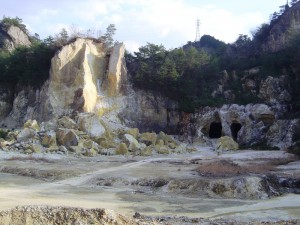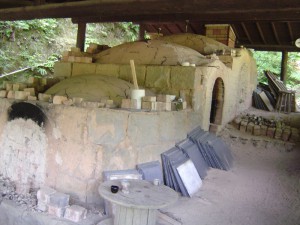The beginning of Arita took place during Hideyoshi Toyotomi’s Imjin War in Korea. The fruitless 7 years of battle was brought to a close with Toyotomi’s death. During this time, many of the feudal lords, or daimyo, returned home from the Korean Peninsula bringing potters with them. Naoshige Nabeshima of the Nabeshima clan in Saga Prefecture was no exception. And then in the second year of the Genna Era (circa 1616), the potter Sanpei Li discovered deposits of white porcelain ore in Arita’s Izumiyama which became known as Japan’s first examples of porcelain goods to be fired. The potters who came from the Korean Peninsula settled in Arita and developed the Joseon Style of pottery which transformed into various methods such as the Chinese style, white porcelain, celadon porcelain and dyeing. Meanwhile, the manufacturing formulas for porcelain goods continued to be polished.

One reason for the distinguishing amongst pottery regions lay not just in the raw materials but also in the firing techniques. When the digging of holes and creation of tunnel-like kilns known as anagama were the norm, climbing kilns, or noborigama, were first developed on the slopes of mountains. The noborigama, which were clustered up on the slopes as firing chambers, had better heat efficiency than single kilns, and therefore, mass production of goods was made possible.

In the third year of the Shoho Era (1646), people like Kakiemon Sakaida were successful in using colors of red, green and yellow to create designs called akae, and thus Japan’s first painted porcelain goods were born.
In the latter half of the 17th century, because of the waning influence of the highly skilled Keitokuchin’s kilns in China, the East India Company in the third year of the Keian Era (1650) bought into Arita Ware, and Old Imari Style quickly spread amongst the nobles of Europe. Because goods produced in the Sarayama district of Arita were shipped out from Port Imari, Arita Ware was often given alternate names like “Imari Ware” or “Old Imari”. This is the reason that Arita Ware has often been called Imari Ware. The Old Imari goods in Europe, greatly admired there, were used to ornament the interiors of palaces. In particular, Augustus the Strong of Germany was such a collector of the most astounding examples of Old Imari that he bought them by selling his own soldiers. Before long, Augustus ordered the development of Meissen porcelain goods which led to today’s Meissen porcelain manufacturing facilities.
And then in the Meiji Era, Arita Ware was revealed in World Expositions all over Europe and America attracting many people from each country.
In 1976, the Kakiemon Porcelain Manufacturing Technique Preservation Society, as well as the Iro Nabeshima Technique Preservation Society were designated as Important Intangible Cultural Assets. Furthermore, in 1980, the remains of the Tengudani Kilns and the Yamaheta Kilns, and the Izumiyama Porcelain Stone Region were designated as national historic sites. In addition, in 1991, the streets of Upper Arita were selected as an important preservation district. Arita Ware has become greatly admired by everyone, and in the future, its importance will be taken to heart without overlooking its pioneers’ efforts, and its traditions must be protected.
>> Characteristics
>> Potter
>> Photos
Article and photos by Arita town
